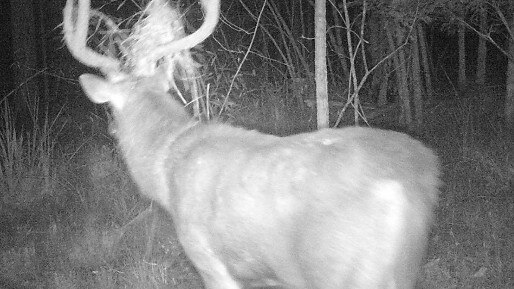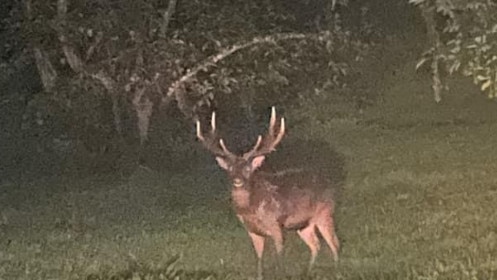Gold Coast City will not rule out using helicopters as 1000 per cent increase in deer sightings
The Gold Coast’s feral deer population is in the firing line, with aerial shooting using helicopters being considered as surveying shows sightings have increased by more than 1000 per cent.
Gold Coast
Don't miss out on the headlines from Gold Coast. Followed categories will be added to My News.
The Gold Coast’s feral deer population is in the firing line, with aerial shooting using helicopters being considered as surveying shows sightings have increased by more than 1000 per cent.
Last month The Bulletin revealed Gold Coast City Council officers had recommended a feral deer management plan, with councillors to vote on the plan on November 12.
The report suggests council explore helicopter control of feral deer, which is considered the most efficient and cost-effective approach for reducing numbers.
“This method has been carefully considered, and the associated risks are considered highly complex on the Gold Coast, given the proximity of residential areas to feral deer habitats,” officers said in the report.


“Land tenure composition is a challenge, with public land being generally surrounded by private land, houses and roads.
“Aerial shooting lends itself more to larger, open environments, where vast areas of public land are unfettered by houses, roads and private land.
“This being said, the proposed strategy should further explore this control method for application on the Gold Coast.”
Lifestyle committee chair Glenn Tozer said the council recognised the proven effectiveness of aerial shooting in certain large, open environments where safety and logistic conditions allowed.
“I’ve had some exposure through my own family’s farming background and I’ve served as a director in pest management agencies for the state over many years now. Aerial shooting is not foreign to me,” he said.
“However, on the Gold Coast the complex land tenure mix and proximity of residential areas to feral deer habitats present challenges that make aerial shooting less practical.
“Therefore, we are not ruling it out entirely, but we believe its application needs careful assessment for suitability and safety in our context.”
Mr Tozer said the biosecurity team would continue with other control methods in the meantime.
“These include trapping, ground-based control methods and the strategic use of fencing in high-risk areas to mitigate both public safety issues and ecological impacts,” he said.
“Our proposed Gold Coast Feral Deer Management Plan will include baseline monitoring through aerial thermal imaging, which will improve our understanding of deer populations and movement patterns, further refining control strategies.
“We are, and will continue to actively engage with key stakeholders, including Watergum, landcare groups, government agencies, and landholders to align our approach with community values and concerns.
“Their insights will help us craft a balanced and responsible feral deer management plan.”


Watergun president Wal Mayr said their non-for-profit environmental group was engaged by the Federal Government to conduct social media surveying, which showed a 1000 per cent increase in feral deer sightings.
Prior to the feral scan, there were nine lodged deer sightings. That increased to 166 in just six months during the surveying in 2022.
Counts in the past month on the floodplain north of Robina, covering an 893ha area, found 670 deer.
Mapping revealed the hot spots for the animals were Merrimac flood plain, Gilston, west of Nerang and north to Mount Nathan and Maudsland.
“People are unaware that they cause road accidents, that they destroy river systems. There’s a perception that they are nice, cuddly little animals,” Mr Mayr said.
“They are in North America — but they’re not in Australia. They’re like foxes and cats — they create havoc, they’re a major, major problem. We’ve got a chance in Queensland, particularly the Gold Coast to manage them.”
The group, which works with all levels of government, is about to start a pilot program which looks at trapping and removing the feral pests “in a humane way” on the ground.





